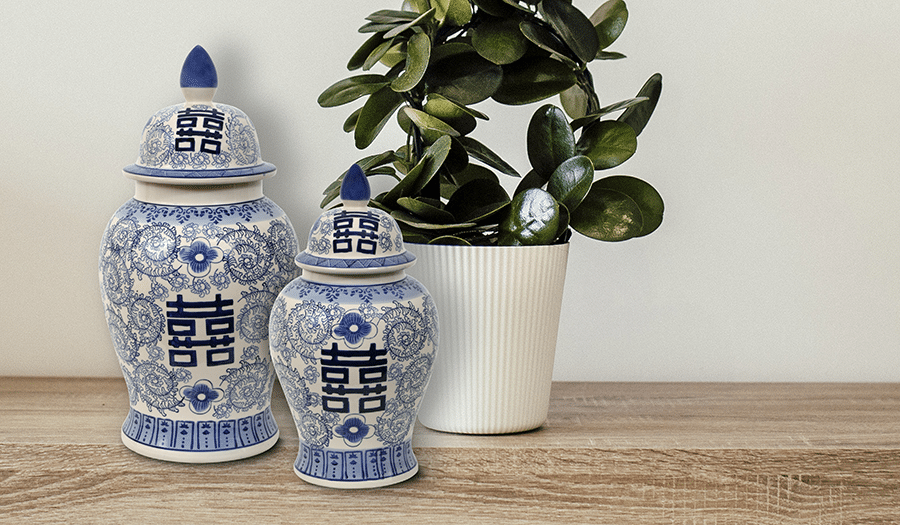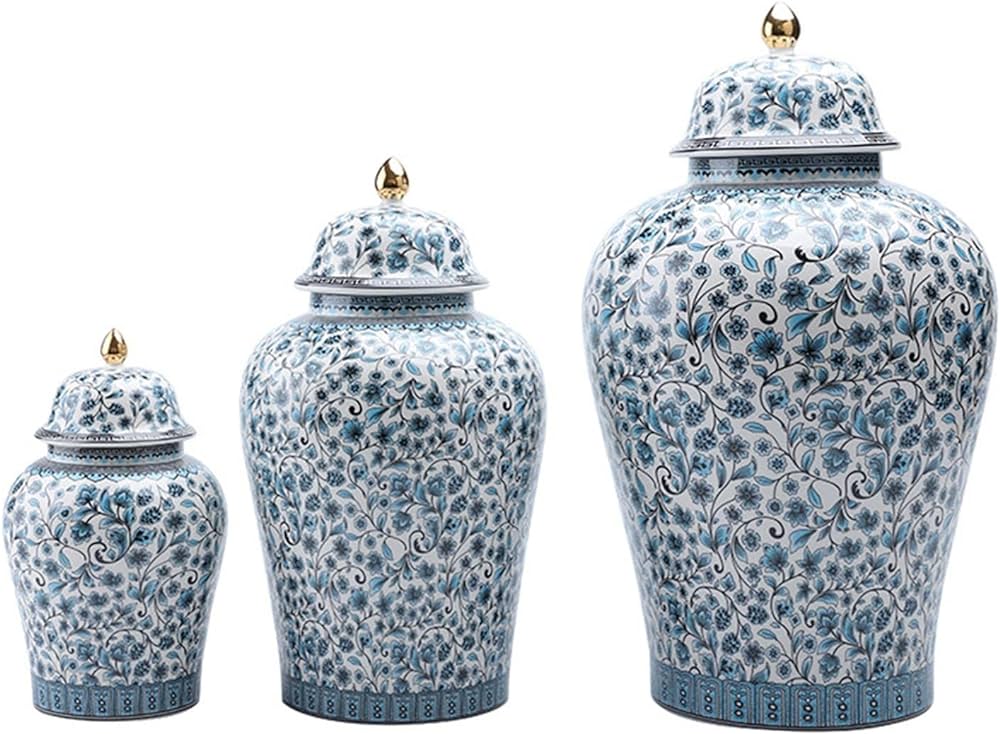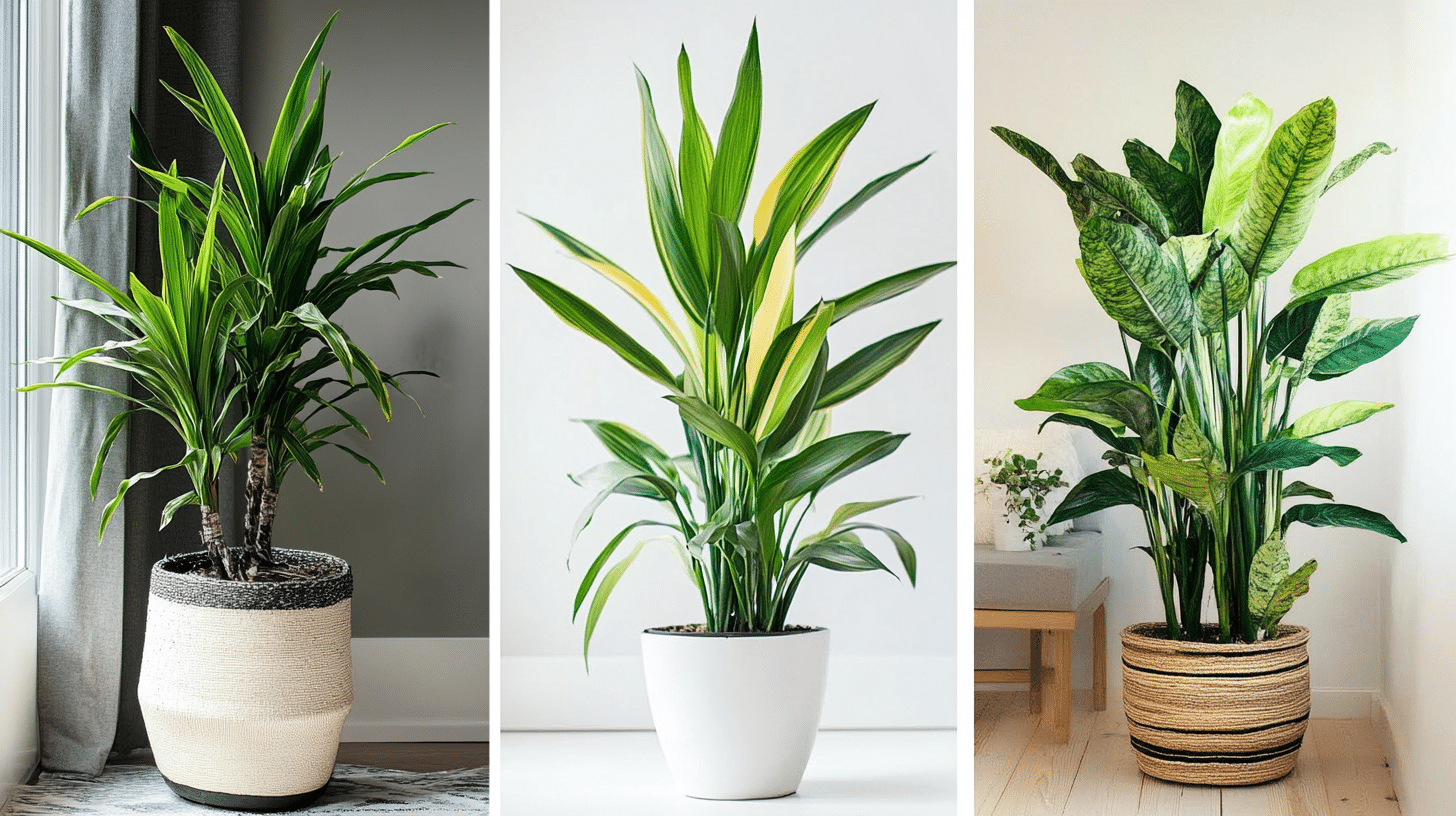How Do Temple Jars Differ from Ginger Jars?
Temple and Ginger jars are two of the most well-acclaimed examples of ancient craftsmanship.
These elements have magnificently worked in decorating enthusiasts’ homes for centuries.
Despite coming from the same geography and having similar appearances, these jars have different characteristics that make a line of difference between the two.
But what are the differences that set them apart? This is one question that excites most home decor lovers.
In this article, we will explore the difference between the two jars based on the multiple parameters and shed light on the various points of difference between the two.
So, without any further ado, let’s get started!
Origin and History of Temple and Ginger Jar

The relevance of these jars is a class apart; we have been decorating homes with ginger jars and temple jars, although we don’t understand the fine line of the difference between the two.
In the following segment, we will detail different parameters to make things clear when defining the two.
The origin of temple and ginger jars is immensely interconnected with the rich Asian history and culture that dates back centuries.
In general terms, temple jars, also known as the temple urns or foo dogs, find their root in the Chinese culture.
In China and other places of influence of similar cultures, people use it as ornamental vessels in temples, palaces, and other households.
Temple Jars are created with important attention to every minute detail. It is often associated with mythical creatures such as dragons, phoenixes, and lions that are taken as a symbol of guardianship.
The hand-printed designs denoting temple jars reflect the Chinese population’s cultural richness and deep spiritual belief.
While Ginger Jars, on the other hand, are linked to a more practical origin.
The records preserve its origin from the 1300s in the Ming dynasty; however, it is widely believed that the actual emergence is way more than that.
Several established records suggest that these jars were initially designed to store and transport spices like ginger, resulting in their naming.
The ginger jar is crafted from porcelain with a round body, wide mouth, and lid adorned with beautiful patterns and designs.
As the years passed, these jars became used as decorative pieces more than practical vessels, which were widely applauded for their aesthetic appeal and rich history.
Designs, Features, and Aesthetics
One of the most noticeable and distinct points of difference between temple jars and ginger jars lies in their design and aesthetics.
If you have observed, you will know that temple jars have an elongated silhouette with a slender neck and a dome-shaped lid.
This gives the impression of the architectural style of the traditional Asian temples.
Temple jars often show relief designs and detailed carvings through elaborate hand-paintings.
In different sets of designs, you will observe the presence of mythological creatures and various symbols.
The craftsmanship shown in the creation presents the top quality of artistry associated with a degree of significance.
On the other hand, ginger jars have a larger body, a flat or domed lid, and a more rounded shape.
These jars, typically made of porcelain, are well-known for their glossy glazes, vivid colors, and ornamental patterns, which showcase different geometric patterns, flowers, and nature-inspired designs.
While certain ginger jars may have ornamental aspects similar to those of temple jars, their aesthetic appeal is typically softer, emphasizing simplicity and elegance.
Cultural Importance

As already detailed, these jars hold a huge degree of cultural significance beyond the degree of visual appeal they present.
Temple and ginger jars have a huge degree of cultural significance in Asian society.
Temple jars are seen to drive away all sorts of evil energies from homes and are believed to have protective elements.
It is also seen to bring prosperity to the home. Temple jars are used in ceremonies, religious rituals, and during celebrations with great importance.
Ginger jars evoke a sense of nostalgia among people for the great visual appeal that dates back to the Ming and Qing dynasties.
In the current scenarios, it is taken as the cherished decorative accents that give the room a touch of elegance.
The best is that it can be incorporated anywhere in the home; moreover, it is widely accepted by people of the younger generation, which is a great sign of the continuance of the rich legacy besides upholding the home’s overall value.
Continuing Legacy and Artistry to Date: Even after these many years, both jars continue to excite homeowners to enhance the richness they present with them.
The richness of these two elements has passed the test of time and has seeped through the current times, making them valuable and a priority for home decor.
Wrapping it Up
Temple and ginger jars are two different but related arts of Asian creativity, where each is linked with its degree of appeal.
Their background and cultural significance also differ in magnitude.
Temple jars are an example of a mythical representation of money, protection, and well-being, which is associated with their extended shapes and decorations, which combine spirituality with architecture,
Ginger jars are more practical and express the cultural beauty, giving the nostalgia of the centuries-old craftsmanship.
We hope this guide has clarified the difference between the two jars, justifying the purpose of this guide.
Drop in your views and any additional insights that could make information more subtle on the difference between temple and ginger jars.
Frequently Asked Questions
1. What is the Difference Between A Ginger Jar and An Urn?
The basic features of porcelain ginger jars include rounded forms, high shoulders, small mouths, and dome-shaped lids. They lack handles, unlike other vessels like the urns.
2. How do You Identify A Ginger Jar?
Many Chinese ginger jars are marked with Chinese characters or writing on the underside. At the same time, others have a manufacturer’s stamp. These markings are an important part of Chinese ginger jar identification. It helps, as they offer clues about who made the jar and when it was made.
3. What are the Uses of Ginger Jars?
Ginger jars are short containers with lids that were first used during the Qin Dynasty in China. These were beautifully decorated; their purpose was originally more functional since it was used to store herbs and spices.







